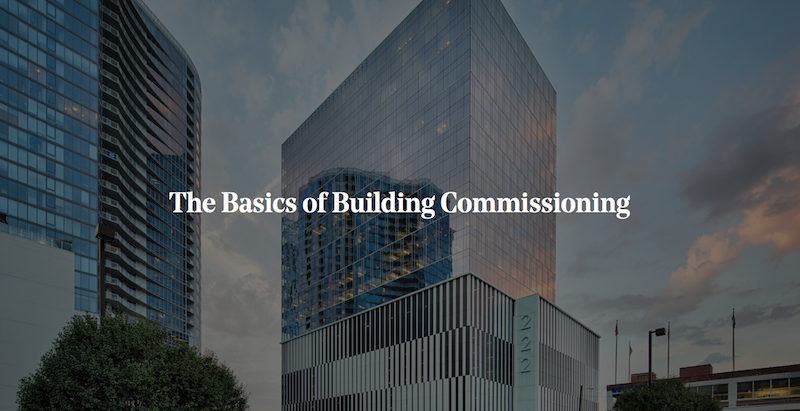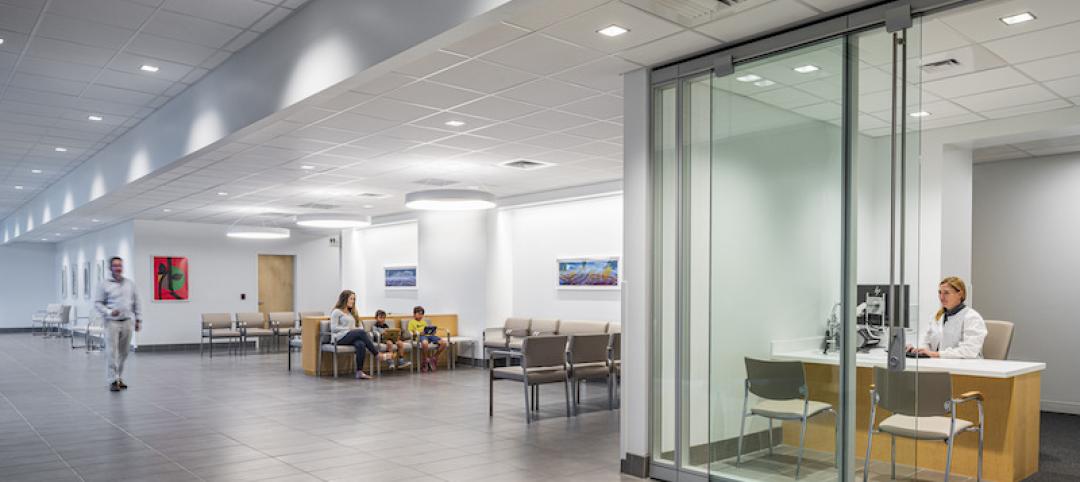Commissioning isn’t a new concept. The term actually dates back to shipbuilding; a commissioned ship is one that’s deemed ready for service. However, a ship must pass several milestones before setting sail. The equipment has to be installed and tested, problems need to be identified and corrected and the crew is extensively trained. Similar to ships, buildings undergo the same functional testing before occupancy.
While the idea of commissioning has been around for a while, it hasn’t always been smooth sailing. Back in the 1980s, building owners mostly viewed commissioning as a start-up process to get the air flowing and the lights going. However, in the 1990s and early 2000s, regulatory standards tightened and electrical utilities began requiring commissioning on energy installations, the U.S. Green Building Council required commissioning as a prerequisite for all LEED certified buildings and some U.S. states and cities passed benchmarking laws necessitating some degree of commissioning. Additionally, in many areas it is required by the International Energy Conservation Code. Since its humble beginnings, building commissioning has proved its value as more than a punch list for testing and tuning mechanical and electrical equipment.
While building commissioning has gained steam and is increasingly recognized as a best practice, it’s still not widely known and it’s often seen as a compliance have-to rather than a value-add. To help raise awareness, we’re tackling the five Ws of commissioning: what it is, who it benefits, when it’s required, where it falls in the design process and, ultimately, why it matters.

What is Commissioning in Construction?
Building commissioning is a systematic process of checks and balances to assure that building systems are designed, constructed and operated for peak performance. The commissioning team brings a holistic perspective to the design process and is responsible for actively reviewing construction documents, validating and testing the specified equipment once it’s installed and verifying building personnel are properly trained in operating and maintaining equipment.
In addition to making sure building elements such as heating, cooling, air handling, water and refrigeration systems work as they should, commissioning agents are also working towards improved energy usage and reduced operation and maintenance costs. While a project’s design professionals and installing contractors are ultimately responsible for the quality of the installation and testing building systems, commissioning agents provide a second set of eyes and ears throughout the design and construction process, catching any deficiencies and resolving issues prior to building occupancy.

How Does Commissioning Work in Construction?
As members of the commissioning team at Gresham Smith, we often work with owners as an independent third-party, which means we have no conflicts of interest and are completely transparent during the commissioning process. However, as part of a multi-disciplinary firm, we often lean on the expertise of our design professionals during the design phase and consult them while troubleshooting any issues we discover during functional performance testing.
While a majority of our role is quality control, we’re also part diplomat. Each member of the project team – the owner, designers, engineers and contractors – all speak a different language, and many of the issues we encounter on projects are due to miscommunication. By communicating effectively and speaking everyone’s language, we help avoid mistakes. We’re able to identify potential errors and omissions early in the design process, which ultimately reduces installation issues and mitigates problems which would normally arise during startup.
Commissioning agents can be involved in the project as early as the pre-design process or as late as construction completion. We advocate for being involved from the start so that the commissioning team can work closely with each member of the project team to catch and address potential issues. However, the timeline can vary based on the type of building, budget constraints and owner preferences.

What are the Different Types of Commissioning?
There are two main types of commissioning: new construction commissioning and existing building commissioning. New construction commissioning is exactly what it sounds like; the commissioning team is involved throughout the design, construction, acceptance, and warranty phases of a project to assure that building systems are designed, constructed and operated for peak performance.
Owners should keep in mind that even after undergoing your initial new building commissioning, it’s common for building systems components to experience normal wear and tear and fall out of their initial performance. Ongoing commissioning is a form of existing building commissioning that keeps the building operating within optimal parameters by maintaining continual monitoring.
When it comes to existing building commissioning, there are two other types, in addition to ongoing commissioning: recommissioning and retro-commissioning. Recommissioning refers to performing commissioning activities on an existing building that has been commissioned at some point before, while retro-commissioning refers to performing commissioning on an existing building that has never been commissioned. In either case, a commissioning agent is hired to inspect the systems, analyze available data and test the operations before providing the owner with a report with suggested improvements. If the building owner decides to implement the improvements, the commissioning agent will typically help facilitate that effort and confirm that the improvements been properly executed.

Why does Building Commissioning Matter?
In addition to avoiding design mistakes and enhancing building operations, commissioning is also beneficial for sustainability and wellness reasons. Because building systems are integrated, a deficiency in one or more components can affect environmental and health conditions, occupant comfort and productivity, and energy savings.
Green building certification programs, particularly the U.S. Green Building Council’s LEED program, requires fundamental commissioning for all LEED BD+C and ID+C certified projects. In addition to achieving LEED accreditation, commissioning is required by most state building codes.
As with ship commissioning, there’s much more to building commissioning than meets the eye. Through constant communication, thorough testing and ample training, we can set buildings up for a smooth voyage. Stay tuned for the next post in this series on commissioning as we take a deeper dive into the new building commissioning process.
More from Author
Gresham Smith | Aug 17, 2023
How to design for adaptive reuse: Don’t reinvent the wheel
Gresham Smith demonstrates the opportunities of adaptive reuse, specifically reusing empty big-box retail and malls, many of which sit unused or underutilized across the country.
Gresham Smith | May 24, 2023
Designing spaces that promote enrollment
Alyson Mandeville, Higher Education Practice Leader, argues that colleges and universities need to shift their business model—with the help of designers.
Gresham Smith | Apr 24, 2023
Smart savings: Commissioning for the hybrid workplace
Joe Crowe, Senior Mechanical Engineer, Gresham Smith, shares smart savings tips for facility managers and building owners of hybrid workplaces.
Gresham Smith | Mar 20, 2023
3 ways prefabrication doubles as a sustainability strategy
Corie Baker, AIA, shares three modular Gresham Smith projects that found sustainability benefits from the use of prefabrication.
Gresham Smith | Jan 19, 2023
Maximizing access for everyone: A closer look at universal design in healthcare facilities
Maria Sanchez, Interior Designer at Gresham Smith, shares how universal design bolsters empathy and equity in healthcare facilities.
Gresham Smith | Dec 20, 2022
Designing for a first-in-the-world proton therapy cancer treatment system
Gresham Smith begins designing four proton therapy vaults for a Flint, Mich., medical center.
Gresham Smith | Nov 21, 2022
An inside look at the airport industry's plan to develop a digital twin guidebook
Zoë Fisher, AIA explores how design strategies are changing the way we deliver and design projects in the post-pandemic world.
Gresham Smith | Feb 13, 2022
Helping maximize project dollars: Utility coordination 101
In this post, I take a look at the utility coordination services our Transportation group offers to our clients in an attempt to minimize delays and avoid unforeseen costs.
Gresham Smith | May 7, 2021
Private practice: Designing healthcare spaces that promote patient privacy
If a facility violates HIPAA rules, the penalty can be costly to both their reputation and wallet, with fines up to $250,000 depending on the severity.
Gresham Smith | Mar 4, 2021
Behavior mapping: Taking care of the caregivers through technology
Research suggests that the built environment may help reduce burnout.
















